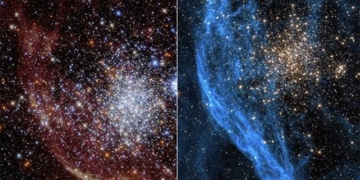Lichens are fascinating organisms that exhibit some characteristics similar to plants, but they are actually a symbiotic relationship between a type of algae or cyanobacteria that provides a “home” for fungi. They have the ability to survive in extremely harsh conditions.
Lichens are a form of partnership between fungi (mycobiont) and a photosynthetic organism (photobiont or phycobiont) in a symbiotic relationship. Lichens are not plants because they lack the typical cellular structure of plants and do not possess the tissues and organs of plants. Lichens are also not fungi because in addition to fungal hyphae, lichens contain green algae or cyanobacteria that contain chlorophyll. However, since lichens always require fungi as a component, they can be classified within the Fungi kingdom. |
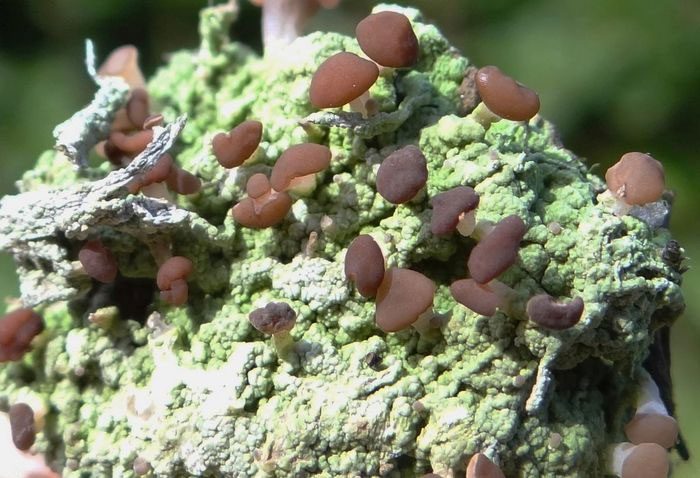
Lichen Baeomyces rufus measures 3-13 cm in length and is found on the Eurasian and North American continents. It forms a gray-green crust on sandy and rocky soil, with brown fruiting bodies on stalks a few millimeters high.
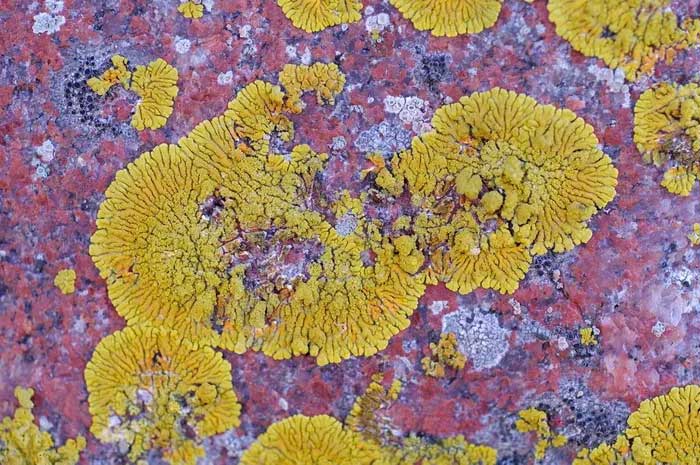
Orange Lichen (Caloplaca verruculifera) measures 5-10 cm in length and appears on rocks in coastal areas of Eurasia and North America, often near bird perches. This species features rounded lobes with an open fruiting body (spore-producing disc) in the center.
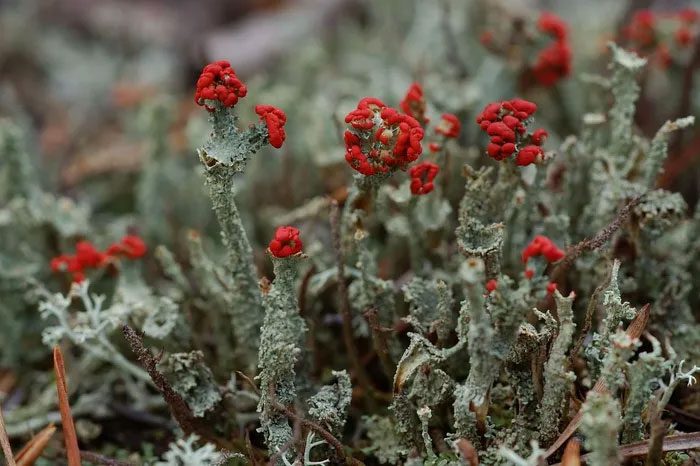
Matchstick Lichen (Cladonia floerkeana) measures 1-5 cm and is commonly found on peat soils in Eurasia and North America. It has a crust-like appearance composed of many gray-green scales, from which bright red fruiting bodies grow at the tips.
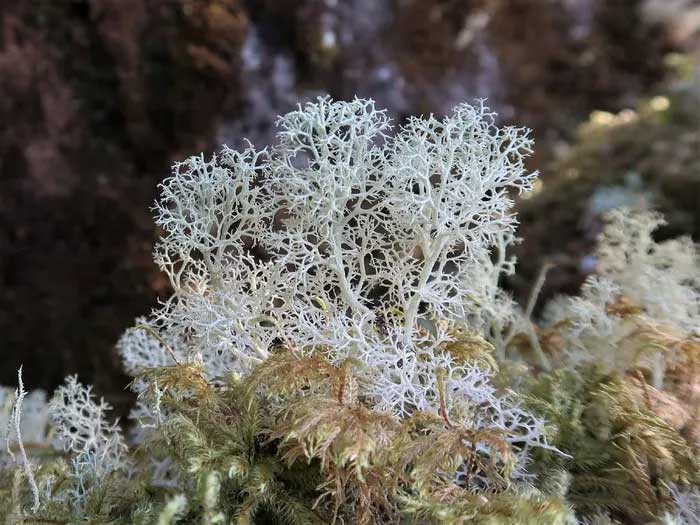
Reindeer Lichen (Cladonia portentosa) measures 3-10 cm and is commonly found in shrublands in northern North America and Eurasia. This species features hollow, slender branches that branch multiple times. It and its close relatives serve as food for reindeer.
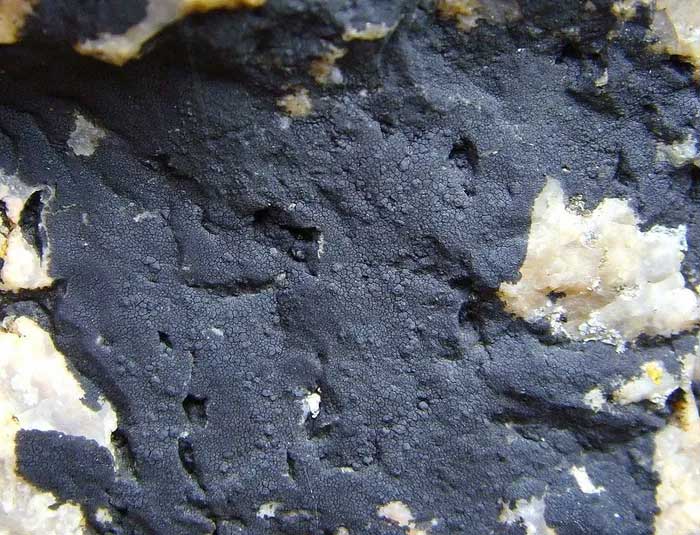
Blackish Lichen (Verrucaria maura) measures 5-50 cm and appears on rocks along the coasts of Eurasia and North America. This species has a cracked black-gray crust containing open fruiting bodies.
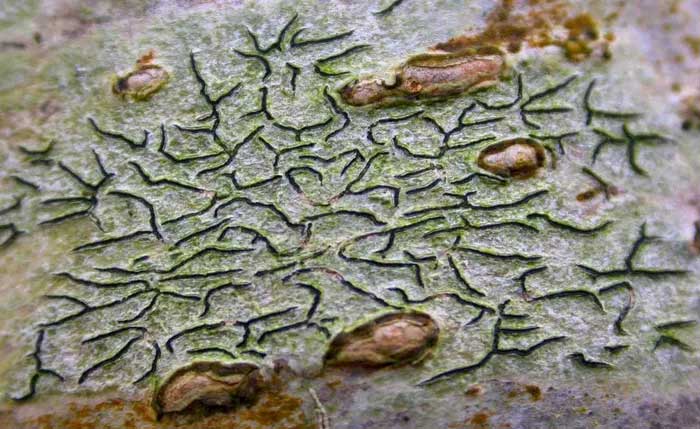
Script Lichen (Graphis scripta) measures 5-10 cm and is commonly found on the bark of trees in Eurasia and North America. This species features a thin gray-green crust with small fissures resembling characters on the surface.

Cowhide Lichen (Lasallia pustulata) measures 5-20 cm and forms clusters on nutrient-rich rocks along coastal or mountainous regions of Eurasia and North America. This lichen has a brown-gray upper surface with numerous oval wart-like bumps.
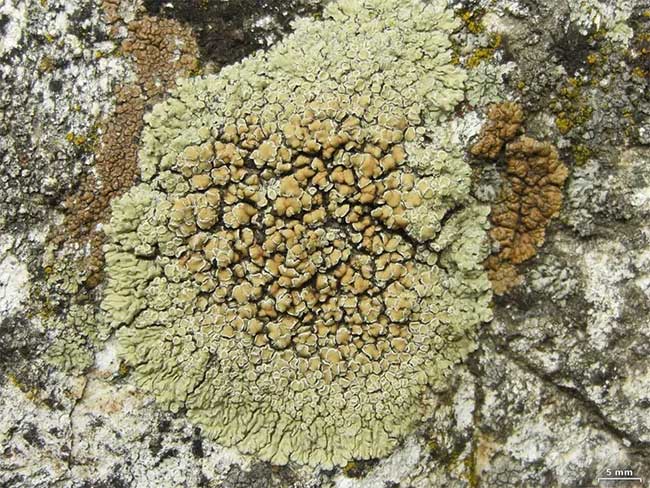
Round Stone Wall Lichen (Lecanora muralis) measures 3-10 cm and typically grows on concrete and stone surfaces in Eurasia and North America. It has lobes that are green-gray and spread outward.
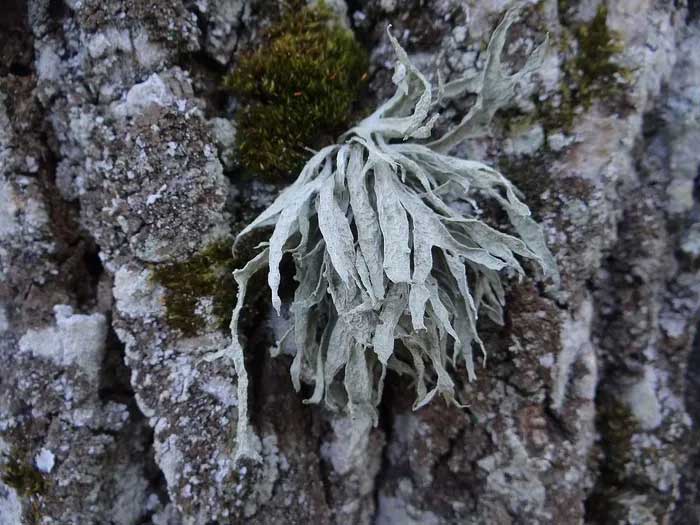
Cartilage Lichen (Ramalina fraxinea) measures 3-10 cm and grows on trees in Eurasia and North America. It has flat branches that are gray-green and spotted with open fruiting bodies.
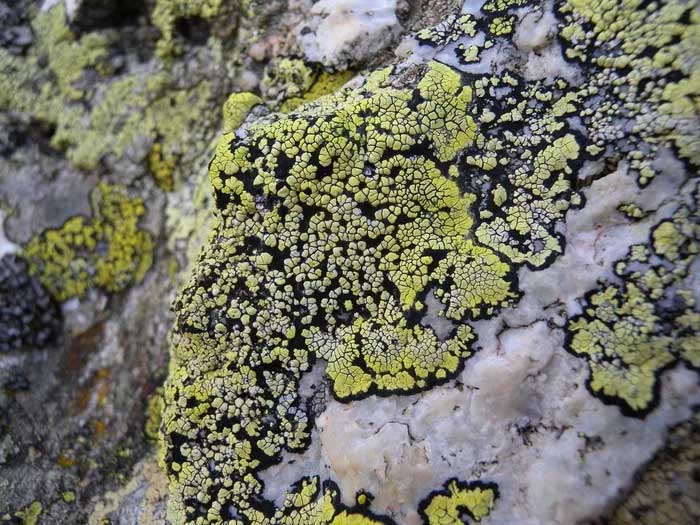
Map Lichen (Rhizocarpon geographicum) measures 5-65 mm and is found on rocks in northern mountainous regions and Antarctica. This species has a flat patch-like appearance with spores surrounded by a black border, resembling patches on rocks.

Coral Lichen (Sphaerophorus globosus) measures 3-10 cm and lives on rocks in mountainous areas of Eurasia and North America. It has branches that are pinkish-brown, forming dense clusters with spherical open fruiting bodies.
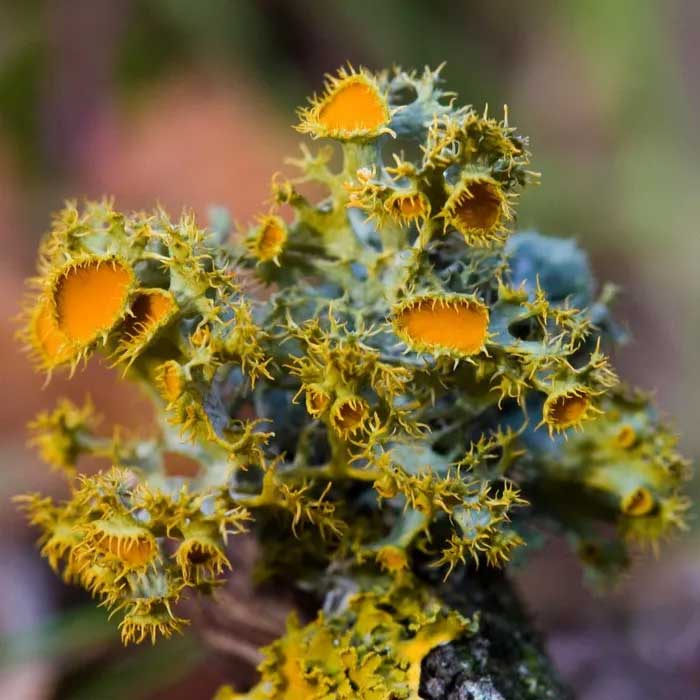
Yellow Eye Lichen (Teloschistes chrysophthalmus) measures 3-8 cm and is distributed across Eurasia, the Americas, and tropical regions. This endangered lichen grows on shrubs and small trees in orchards and hedgerows. Its branched lobes form large orange discs.
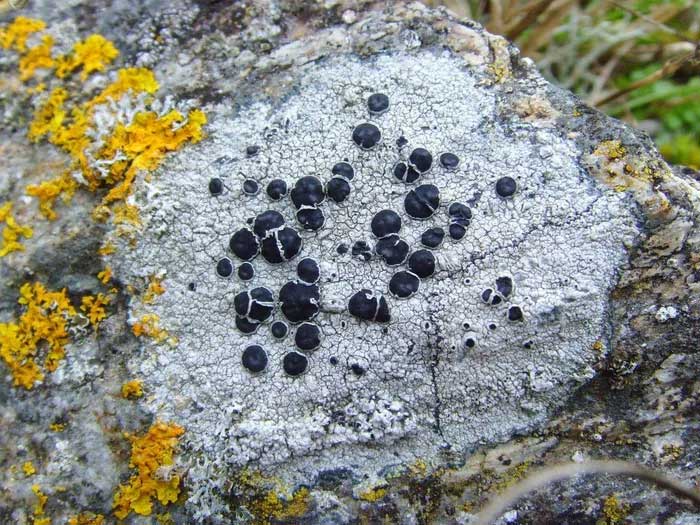
Black Shield Lichen (Tephromela atra) measures 3-10 cm and appears on exposed rocks in Eurasia and North America. It has lobes that resemble pale gray crusts and black open fruiting bodies.
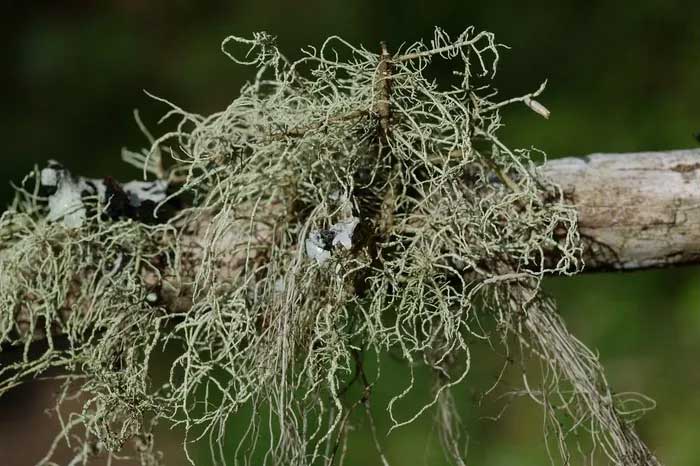
Beard Lichen (Usnea filipendula) measures 5-15 cm and is found in the northern mountainous regions of the Northern Hemisphere. It forms drooping green tufts hanging from trees, with spiny open fruiting bodies forming at the tips.


















































